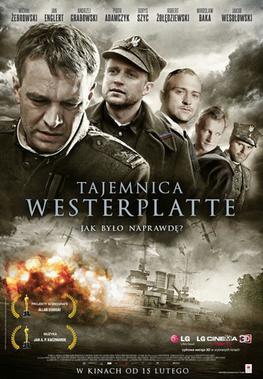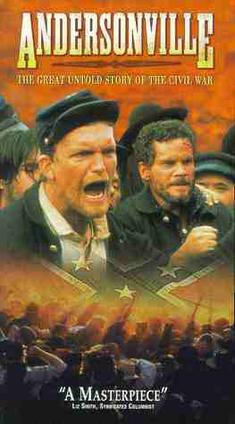I’ve
reached my 700th post and have decided to make it special by
reviewing the first war movie I ever saw.
My family was living in Japan as my father flew a F-105 fighter/bomber
in the Vietnam War. My father took me
and my brothers to see it in a theater off base. It was a big deal for us even though, at age
seven I did not get the big deal about Ultra Panavision. At least I can now claim that I saw the movie
in the format and environment (ultra wide screen) that it was meant to be seen
in. I don’t remember much about that
first view, but naturally at that age I found it very entertaining. And throughout childhood, its periodic
appearances on TV always had the boys glued to the TV screen. It wasn’t until later, after I became obsessed
with history, that I began to reassess my opinion of it. As with some of my childhood favorites, it
does not hold up to scrutiny.
“Battle
of the Bulge” was directed by Ken Annakin (“The Longest Day”) and is a similar
all-star battle epic. It was filmed in
Spain with the advantages of support from Franco’s military (he provided 500
soldiers and 75 vehicles), but the disadvantages of inaccurate terrain. Robert Shaw had his first major role and was
paid $250,000 (more than his total paychecks up to then). That dollar figure is the same amount that
was paid to recreate the town of Ambleve so the movie could rubbleize it. The movie premiered on the 21st
anniversary of the battle.
The
movie opens with an overture. For you
non-baby boomers, that means that while you are settling into your seat you are
treated to orchestral music. This is
followed by a narrator and the accuracy problems are off and running. The narrator explains that it is December,
1944 and the Anglo-Americans are on the brink of victory. The Ardennes Forest is a quiet sector. Gen. Montgomery’s 8th Army is to
the north of the forest. (In the first
example of sloppy history, the 8th was actually in Italy.) Lt. Col. Kiley (Henry Fonda – continuing a
tradition of casting actors too old for their roles) is scouting in a spotter
plane and takes an incredibly accurate photo of a German officer in a moving
car. He later identifies the mystery man
as a German tank savant named Col. Hessler (Shaw). Hessler is on his way to a meeting with a
general who surprises him with der Fuhrer’s plan to launch a go for broke
offensive in the Ardennes. The target is
the port of Antwerp and the plan will depend on poor weather to keep Allied air
grounded. He will have 50 hours of fuel,
queue the countdown clock. Hessler is no
Nazi fanatic, but he does love a challenge so he is on board. He is, however, skeptical of his young, green
tank commanders until they break into a rousing rendition of “Panzerlied”
(“Panzer Song”). As a child, I was ready
to enlist in the panzers at this point.
Meanwhile, Kiley is trying to convince his overconfident superiors that
a major attack is imminent. He is
derided by the mustache twirling Col. Pritchard (Dana Andrews). In an “I’ll show you by getting myself killed”
move, he visits a bunker on the Siegfried Line where Maj. Wolenski (Charles
Bronson) shrugs empathetically. What do
you want me to do? Here come the
Germans!!
Now
that the shooting has commenced the movie jumps between several
characters. Hessler and his aide Conrad
(Hans Christian Blech) attack the city of Ambleve and head for the Meuse River
while ever aware of their dwindling fuel supplies. Kiley goes from intelligence officer to
combat soldier. Lt. Schumacher (Ty
Hardin) leads German commandoes disguised as Americans in causing chaos behind
American lines. Sgt. Guffy (Telly
Savalas) finds the battle an inconvenience impacting his black market
operation. He commands a Sherman tank
and the screen when he is on it. He does have to share the screen with a bunch
of tanks in the climactic battle.
“Battle
of the Bulge” may be a all-star battle wannabe, but the cast is nowhere near
“The Longest Day”. The acting is less
than stellar also. Fonda is comfortable
as the ex-cop who butts heads with the brass, but his character is put in some
ridiculous situations including getting shot down by tanks firing their main
guns. He has to be everywhere to glue
together the American arcs. “The Longest
Day” did not stretch any of its characters like that. Col. Vandervoort did not plan the invasion,
paratroop behind the lines, and land on Omaha Beach. Shaw is good as the war-loving Hessler. Blech makes a fair foil for Hessler, but
their relationship is not realistic.
Savalas steals the show with his Guffy. The character brings some forced comic relief
and the required redemption arc. He does
a lot of scenery chewing, but at least he didn’t have to eat any snow.
The
problem with the movie is not just that it is an historical atrocity, but it is
also laughably ridiculous. Not one
character is named after a real person, which must have been a dictate from the
studio’s legal department. (This was
partly due to the fact that Columbia had green-lighted a movie called “16th
of December: The Battle of the Bulge”
featuring Eisenhower, Montgomery, and Hitler.
John Wayne was set to play Patton.
Those who cry for a redo on the battle, should ponder what a make would
have been like.) Fortunately for the
producers, events cannot sue. The script
shows a contempt for the historically knowledgeable, but an understanding of
what passes as entertainment for the masses.
(The movie has an incredible 67% on Rotten Tomatoes.) This explains why the snowless Spanish plains
(perfect for Panavision) stand in for the snowy hills and dense forest of the
Ardennes. It also explains how most of
the main characters end up at the gas depot.
The first big battle scene is adrenalin pumping, but if you have seen
many war movies, you’ll laugh at some of the silliest deaths ever. (Those
Spanish extras add a nice twirl to their touchdown signaling.) They must have
story-boarded that scene using plastic army men. The battle of Ambleve and the final tank
battle are equally silly tactically. But
there are lots of explosions.
Accompanied by pompous epic movie music.
If
the movie was entitled “Battle of the Bugle”, I would tell you to watch and
kill some time while you eat your popcorn. (No need to cozy up by the fire,
this isn’t the “Band of Brothers” episodes on the Bulge.) But this is a war movie blog, so war movies
are held to a higher standard here.
“Battle of the Bulge” might be the worst of the all-star battle epic
subgenre. Keep in mind that the subgenre
includes “Pearl Harbor”, which is definitely superior to it.
GRADE
= D-
HISTORICAL ACCURACY: The
movie has a disclaimer at the end that explains that in order to cover the
battle, some names and places have been generalized and “action has been
synthesized to convey the spirit and essence of the battle.” But it also claims that the movie honors the
participants in the battle. Since the
Battle of the Bulge was the biggest battle in American History and it was only
21 years old, there were still plenty of participants who could clearly
remember the battle. For instance, they
could remember the freezing cold temperatures and frostbite-inducing snow. The movie makes a mockery of the hardships
they endured. This must have been part
of the reason why Dwight Eisenhower came out of retirement to tell the press
that the movie was terrible. You did not
have to be a veteran to be offended by it.
Being an historically-informed person put you in the offended
group. It’s not like the battle was
ill-covered by historians. It was not
like the Battle of Ia Drang for people seeing “We Were Soldiers”.
The
movie is not without some education value.
The first third does a fair job of outlining the situation before the
German attack. The American high command
was complacent and overconfident.
However, there were some warning signs, just not like Kiley’s
snooping. The German plan was summarized
well. It was a last ditch gamble by
Hitler. The target was Antwerp, but generally he was hoping to break through
and cover as much ground and do as much damage as his forced could accomplish
before fuel and clear weather became factors.
Much of the military leaders were skeptical of the plan and Hessler does
not represent this group well. The movie
glosses over any concerns and basically uses the “Panzerlied” to make him a
Kool-aid drinker. Hessler is based on
the real-life Joachim Peiper who was an SS commander who would have been drinking
Kool-aid through the whole war. The
screenwriters made Hessler fictional because the regrettably still alive Peiper
threatened to sue. Poor decision by him
and his lawyers as Hessler was a big upgrade to Peiper’s reputation. For instance, Peiper ordered the Malmedy
Massacre, while Hessler laments it. The
only other character that can even loosely be linked to a real person is
Schumacher representing the famous Hitler fav Otto Skorzeny. Skorzeny rescued Mussolini and then was given
command of Operation Greif. He deserves
a movie of his own.
The
opening breakthrough is fairly accurate.
American forces were taken by surprise, but it was more due to the
weather than the Tigers. Wolinski’s unit
was typical of the ass-whipping that many units received. For a large-scale epic, the movie curiously
concentrates on just Gen. Gray’s (Robert Ryan) division versus Hessler’s
division. Schumacher’s men are thrown in
to exemplify Operation Greif. Their
activities like turning around signs are true, but their unintended effect of
sowing confusion among American soldiers is not touched on. Even Ike had to answer questions to prove he
was a legit American. The movie gives them way too much credit. They did not capture and hold any bridges. The Malmedy Massacre was another no-brainer
inclusion and it is satisfactorily rendered.
One quibble is that there was not a “Great Escape” moment with a machine
gun in the back of a truck. And, in this
case, there was no snow on the ground – the bodies were covered by snow before
their discovery.
The
assault on the town of Ambleve represents several towns that were taken under
similar circumstances. It is doubtful
the Germans would have use tanks as artillery, but the movie shows virtually no
artillery being used by either side. It
also does not give any credit to Allied air.
In the final battle, which is based on the Battle of Celles, air and
artillery played a major role. The
depiction of Shermans suicidally sacrificing themselves to bleed the German
tanks of their fuel is farcical. In
actuality, the victory was a combination of Shermans, artillery, and Typhoons
pouncing on the already fuel deficient Germans.
The defense of the depot is pure
Hollywood, but an appropriate bit of nonsense to close out the film.






.jpg)



